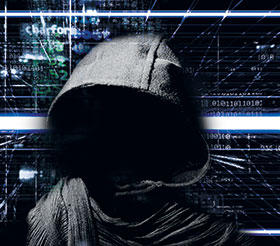

ESET researchers have discovered the biggest threat to industrial control systems since Stuxnet. Industroyer is a sophisticated and extremely dangerous malware designed to disrupt critical industrial processes.
Researchers analysed samples of the malware, detected by ESET as Win32/Industroyer, capable of performing an attack on power supply infrastructure. The malware was most probably involved in the December 2016 attack on Ukraine’s power grid that deprived part of its capital, Kiev, of power for an hour.
ESET researchers discovered Industroyer is capable of directly controlling electricity substation switches and circuit breakers. It uses industrial communication protocols used worldwide in power supply infrastructure, transportation control systems, and other critical infrastructure. The potential impact may range from simply turning off power distribution, triggering a cascade of failures, to more serious damage to equipment.
Industroyer is a particularly dangerous threat, since it is capable of controlling electricity substation switches and circuit breakers directly. To do so, it uses industrial communication protocols used worldwide in power supply infrastructure, transportation control systems, and other critical infrastructure systems (such as water and gas).
These switches and circuit breakers are digital equivalents of analogue switches; technically they can be engineered to perform various functions. Thus, the potential impact may range from simply turning off power distribution, cascading failures and more serious damage to equipment. The severity may also vary from one substation to another.
Industroyer’s dangerousness lies in the fact that it uses protocols in the way they were designed to be used. The problem is that these protocols were designed decades ago, and back then industrial systems were meant to be isolated from the outside world. Thus, their communication protocols were not designed with security in mind. That means that the attackers didn’t need to be looking for protocol vulnerabilities; all they needed was to teach the malware ‘to speak’ those protocols.
Industroyer is modular malware. Its core component is a backdoor used by attackers to manage the attack: it installs and controls the other components and connects to a remote server to receive commands and to report to the attackers.
What sets Industroyer apart from other malware targeting infrastructure is its use of four payload components, which are designed to gain direct control of switches and circuit breakers at an electricity distribution substation.
Each of these components targets particular communication protocols specified in the following standards: IEC 60870-5-101, IEC 60870-5-104, IEC 61850, and OLE for Process Control Data Access (OPC DA).
Generally, the payloads work in stages whose goals are mapping the network, and then figuring out and issuing commands that will work with the specific industrial control devices. Industroyer’s payloads show the authors’ deep knowledge and understanding of industrial control systems.
The malware contains a few more features that are designed to enable it to remain under the radar, to ensure the malware’s persistence, and to wipe all traces of itself after it has done its job.
Industroyer is highly customisable malware. While being universal, in that it can be used to attack any industrial control system using some of the targeted communication protocols, some of the components in analysed samples were designed to target particular hardware. For example, the wiper component and one of the payload components are tailored for use against systems incorporating certain industrial power control products by ABB, and the DoS component works specifically against Siemens SIPROTECT devices used in electrical substations and other related fields of application.
Read more at www.welivesecurity.com/2017/06/12/industroyer-biggest-threat-industrial-control-systems-since-stuxnet/
© Technews Publishing (Pty) Ltd. | All Rights Reserved.